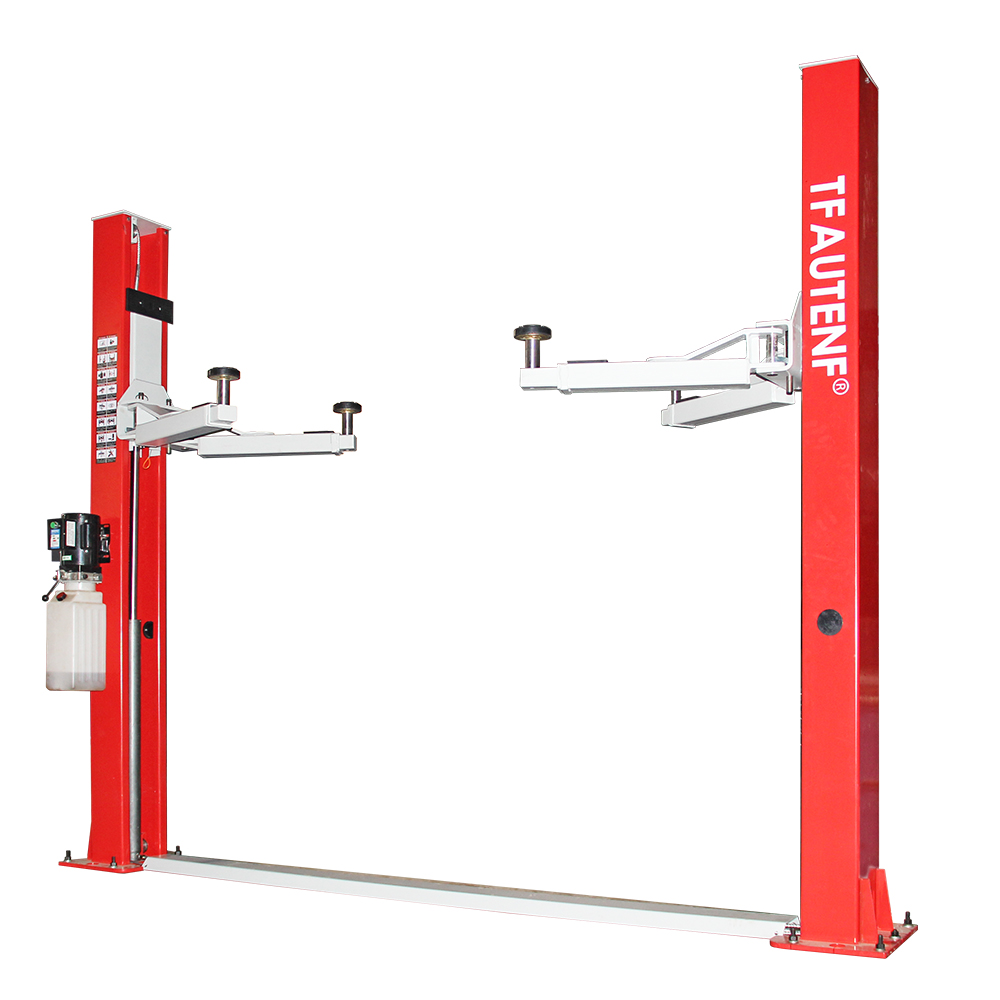
Bloody accidents have shown us that there is no room for carelessness with a two-post lift. Any single oversight can lead to vehicle damage and fatal injuries. The following ten iron rules, each written in blood, must be remembered!
1. NO OVERLOADING!
Every lift has a rated capacity. Exceeding it means testing the limits of the steel cables and hydraulic system. Overloading can cause permanent deformation or sudden collapse of the equipment, with unimaginable consequences.
2. NO ENTERING UNDER THE VEHICLE WITHOUT LOCKS ENGAGED!
After lifting, you MUST confirm the mechanical safety lock is fully engaged. The hydraulic system alone is not trustworthy. If pressure fails, the vehicle will freefall, leaving anyone underneath with no chance of survival.
3. NO INCORRECT SUPPORT POINTS!
The lift pads must be positioned on the vehicle manufacturer's designated lift points (usually marked by a symbol near the door sills). Lifting on the fuel tank, suspension, or oil pan can cause severe vehicle damage or even a tip-over.
4. NO ROCKING/SHAKING THE VEHICLE WHILE LIFTED!
Avoid performing forceful operations (like loosening stubborn suspension bolts) on a raised vehicle. Severe shaking can destabilize the lift, causing the vehicle to slip and fall.
5. NO FULL LIFTING WITHOUT A LIGHTWEIGHT TEST!
When the vehicle is 10-15 cm off the ground, pause and check: Are the support points accurate? Is the vehicle stable? Only proceed with the full lift after confirmation. This is your last chance to correct errors.
6. NO USING DAMAGED OR UNSUITABLE LIFT ARMS/PADS!
Worn pads can't provide effective friction, and overly long arms might interfere with other components. Regularly inspecting accessories for integrity is fundamental to safety.
7. NO UNTRAINED PERSONNEL OPERATING ALONE!
Operators must fully understand the equipment principles, vehicle lift points, and emergency procedures. Letting a novice operate alone is like planting a time bomb in the workshop.
8. NO NEGLECTING DAILY CHECKS & REGULAR MAINTENANCE!
Daily, inspect the cables, hydraulic fluid, and locking mechanisms. Schedule regular professional maintenance for the entire system. Equipment operating with faults is a precursor to accidents.
9. NO MOVING LIFT ARMS BEFORE THE VEHICLE IS FULLY LOWERED!
This can catastrophically shock the synchronization system, causing deformation and damage, creating hidden dangers for the next lift operation.
10. NO LEAVING YOUR POST WHILE THE LIFT IS OPERATING!
Monitor the entire lifting process. If you notice any abnormalities like unusual noises or unsynchronized movement, you can immediately hit the emergency stop, preventing danger at its source.
Safety is the bottom line. There are no exceptions. Your commitment to proper procedure protects your own safety and your family's well-being.